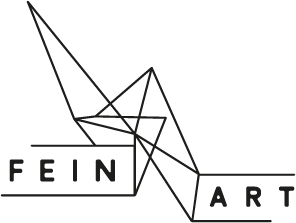While I was thinking of reflecting a bit on my FEINART experience on this last blog post, a dear friend brought up the contested depiction of the Icelandic art scene in the article ‘We’re All Members of the Clique’[1], a portrayal that also resonates with the challenges I have encountered while navigating Icelandic society and the artistic field as a foreign researcher without any pre-existing connections with or social ties to Iceland. The article appears in the fourth volume of the Art in Iceland magazine, which has been actively engaged in exploring contemporary art in Iceland since 2021 as a significant contributor to the development of artistic discourse in the cultural field. It is a collaborative effort involving The Association of Icelandic Artists (SÍM), The Icelandic Art Center (KÍM), The Department of Fine Art at the Iceland University of the Arts, The Association of Art History and Theory in Iceland, and The Icelandic Visual Arts Council[2].
The article is grounded in empirical research, specifically based on interviews with “artists and professionals who work in galleries and museums” (Sigurðsson, 2024, p.95). The term ‘professionals’ can be perceived just as broad and vague as the diverse roles of the artist in the neoliberal economy. Also, there is no information on the type of organisational structures— whether they are artist-run, commercial, or state-run, which makes it difficult to understand the spectrum of positions. Respondents participating in the research have been kept anonymous to encourage more outspoken and free responses, thereby also no information has been given on the demographic profiles of the participants as it could be quite easy to identify who is speaking given that the art scene is so small and not so many professionals are associated with museums and galleries.
The discussion mainly revolves around the significant role that interpersonal relationships, connections and community ties play in the artistic field, such as in granting access to the resources, opportunities, and field-specific information. The findings are not new, yet it is still a bit disheartening to read the views on how easy becoming part of “this little world” could be, by engaging with the ‘right’ network, either through educational or art institutions or active networking at events and activities despite the challenges involved due to a “connections-fuelled art visual art scene” (Sigurðsson, 2024, p.97).
Obviously, social capital has the stronger currency value in the artistic field, and in the society at large. As also mentioned in the article, The Iceland University of the Arts appears as a vital actor not only in providing education and training but also access to networks, resources and opportunities that are crucial for artists and cultural workers entering the field or seeking validation and recognition. But it could be important to note that until the fall semester of 2024 the tuition fees at the Iceland University of the Arts, which is the only institution offering higher education degree in the arts in Iceland, was notably higher compared to other universities in the country. Those who can afford to study there and have the necessary interpersonal skills and resources in networking – which requires constant investment in the right kind of capital and alignment with certain patterns of behaviour within the community – might be the ones enjoying more of the advantages and opportunities that the network would offer.
The emphasis on how one can easily navigate the field once s/he is “part of the clique” could be seen as hiding more fundamental unresolved issues of “xenophobia, the inflexibility of the system and the lack of inclusion (Ibid.),” the presence of which was also admitted in the article. In this regard, it seems also a bit contradictory to portray the art scene in a favorable light while the existing power dynamics seem to discourage some of the respondents from openly sharing their opinions and encouraging them to request anonymity in the research. I have also encountered a similar situation during my field research where some practitioners were hesitant to safely express their critical and dissenting views on the artistic scene and its inherent problems without anonymity, to avoid risking their position in the ‘clique’ or facing exclusion.
It has become more widely discussed that it is not easy for artists and cultural workers, especially those with immigrant backgrounds – without certain privileges and connections – to make their way through such a small artistic scene with the limited scope for opportunities, or to get to know Iceland’s tight-knit art community. It is not just about merit or experience; perhaps sometimes it is even sheer luck; but, rather, it is mostly about who you know and how well you can navigate certain social circles. In response to all these issues mentioned related to systems of exclusion and inclusion, there are number of initiatives led by artists, cultural workers, educators, scholars, and activists from different backgrounds and practices, addressing the structural barriers and systemic discrimination and inequalities that exist within the society, and that take action in making the artistic field more accessible, equitable, diverse, inclusive, and sustainable.
The author leaves it to the reader to decide “whether the proposition that ‘we are all members of the clique’ is childlike naïvete or a credible statement” (Ibid, p.99). Everyone can draw different conclusions from this, but for me, it rather risks becoming a homogenizing account not cherishing difference and diversity, an account that favours uniformity. I would also ask: Who exactly is being referred to by ‘we’ here? With what and how is that clique moulded; what factors and which actors act as the´binding´glue? Why not unlearn those normative structures and practices that tie individuals to the clique itself.
[1] Sigurðsson, Þ. G. (Winter 2024). We’re All Members of the Clique. Art in Iceland, Vol.4, 93-99.
[2] See: https://www.icelandicartcenter.is/art-in-iceland

